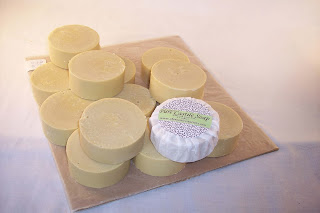This morning's project was a new picture for my Etsy banner and Facebook page. The struggle has been that I usually photograph on a white background. That worked well for my other Etsy shop, Mulberry Junction, but not so well with my white lotion bottles.
In the picture below you can see how I do my photography for most of my products. I built this light box with some carboard boxes, white fabric, white paint and spray on glue. I use it next to the window you can see in the picture and then add light with my halogen work lights.
Today, as you can see in this picture, I pinned green fabric to the backdrop to make my white jars and bottles stand out more. I added some color with calendula flowers and threw in some peppermint and a comfrey leaf, all herbs I use in my lotions and balms.
Any thoughts on improving the picture? How do you make your online pictures stand out? Do you have any photography tips to share?








